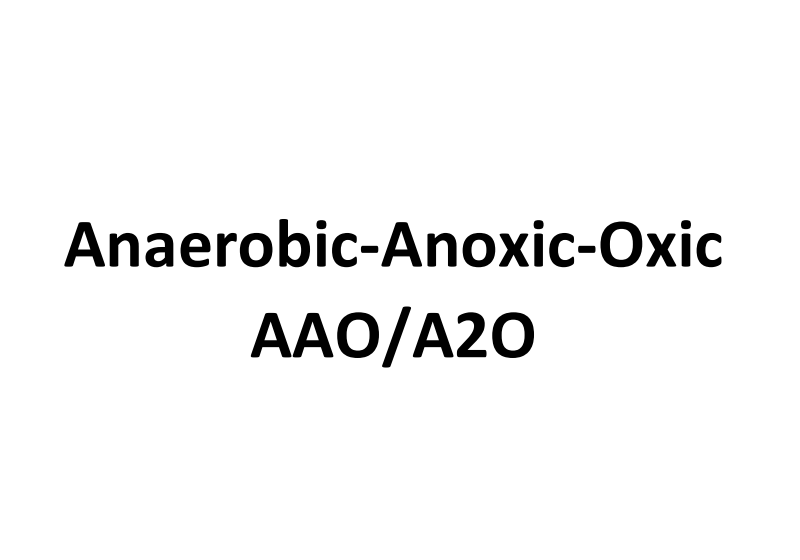Comparative analysis of removal performance of AO and AAO
Although AO Process and AAO Process both belong to biological sewage treatment process, QDEVU conducts comparative analysis on the two sewage treatment processes through the comparison of water quality before and after the process improvement of local sewage treatment plant, which provides a certain basis for the selection of urban sewage treatment plants.
Comparison of COD Removal Performance
The removal capacity of the sewage treatment process for organic matters is one of the main indicators to characterize the process efficiency. The COD directly reflects the amount of organic matter in the sewage.
Through data processing, the difference significance test was conducted on the COD concentration and COD removal rate of the inlet and outlet water of the two processes respectively:
- The results showed that there was no significant difference in the COD of the inlet water of the two processes, but there was significant difference in the COD and removal rate of the outlet water. The removal of COD by AAO process was significantly better than that by AO process.
- The reason is that in the AO process, the denitrification reaction in the anoxic section can consume some organics in the sewage, but most organics are removed by aerobic degradation. The aerobic section of AO process in Phase I of WWTP has short hydraulic retention time, small volume of aeration tank and insufficient aeration volume, resulting in poor organic matter removal effect. In the AAO process, most of the organics are converted into PHB by phosphorus accumulating bacteria in the anaerobic section and stored in cells. Some organics are removed by denitrification in the anoxic section. When the wastewater enters the aerobic section, the COD concentration is basically close to the discharge standard, and will be further degraded in the aerobic section.
Some studies have shown that the COD removal rate in the anaerobic section of AAO process can reach 80% at most, while the removal rate in the anoxic section is less than 10% on average.
Comparison of Denitrification Performance
AAO and AO process have biological nitrogen removal function, and both processes have the same nitrogen removal principle, both of which are denitrification.
Through the significant difference experiment on the TN concentration and TN removal rate of the inlet and outlet water of the two processes:
- The results show that there is no significant difference between the two processes in the TN of the inlet water, but there is significant difference in the TN and removal rate of the outlet water. The TN removal of AAO process is significantly better than that of AO process. In denitrification process, nitrate nitrogen is the main substance in total nitrogen of effluent, and the removal rate of nitrate nitrogen in anoxic section can be higher than 90%.
It has been pointed out that controlling the nitrate concentration in the effluent of anoxic zone to 1mg/L ~ 2mg/L can maximize the removal rate of TN and make full use of COD to improve the denitrification capacity of anoxic zone. The mixed liquor in the aerobic zone contains a large amount of nitrate nitrogen, which returns to the anoxic zone through internal circulation, where denitrification takes place.
Comparison of Phosphorus Removal Performance
If the phosphorus content in the water exceeds the standard, it will also cause a large number of microorganisms to multiply, plankton to grow vigorously, and eutrophication. The emergence of denitrifying phosphorus removal technology is a breakthrough in the traditional biological phosphorus removal theory. It can not only solve the problems existing in the traditional process, but also help to achieve sustainable sewage treatment.
Through the significant difference experiment on the concentration and removal rate of TP in the inlet and outlet water of the two processes:
- The results show that there is no significant difference between the two processes in the influent TP, while there is significant difference in the effluent TP and removal rate. The removal rate of TP by AAO process is significantly better than that by AO process.
- The reason is that there is no anaerobic phosphorus release section in the AO process of Phase I of the WWTP. In the process of biological phosphorus removal, phosphorus accumulating bacteria can only fully release phosphorus in the anaerobic section to ensure good phosphorus absorption effect in the anoxic section and aerobic section. This process only removes phosphorus through the assimilation of microorganisms. The phosphorus removal of AAO process is mainly completed by phosphorus accumulating bacteria. Generally speaking, the amount of phosphorus absorbed by phosphorus accumulating bacteria in the anoxic and aerobic stages is more than that released in the anaerobic stage.
Studies have shown that the ratio of average phosphorus uptake to average phosphorus release in AAO process is 1.28, and the phosphorus uptake in anoxic section is higher than that in aerobic section.
Removal Performance Comparison Summary
To sum up, the AAO process for removing organic matter, nitrogen and phosphorus is obviously better than the AO process, especially for phosphorus removal. Since the AO process has no anaerobic section, only a small part of phosphorus can be removed through microbial assimilation, so this sewage treatment process or chemical phosphorus removal is not required for phosphorus removal.
#QDEVU #WATERTREATMENT #WASTEWATERTREATMENT #SEWAGETREATMENT



